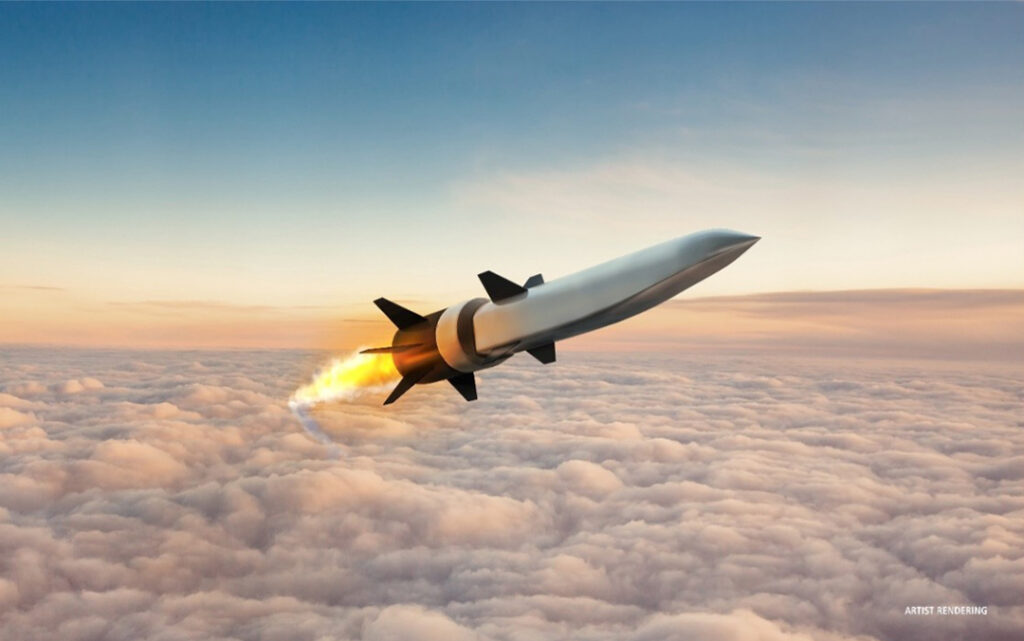THE WATCH STAFF
In a test that has far-reaching implications for U.S. cruise-missile technology, the Hypersonic Air-breathing Weapon Concept (HAWC) recently made a successful free flight, according to the Defense Advanced Research Projects Agency (DARPA).
The HAWC vehicle, developed in a partnership between the U.S. Air Force and DARPA, made the flight during the week of September 20, 2021, according to a September 27 DARPA news release. (Pictured: An artist’s rendering of the HAWC.)
This “was a successful demonstration of the capabilities that will make hypersonic cruise missiles a highly effective tool for our warfighters,” Andrew Knoedler, HAWC program manager in DARPA’s Tactical Technology Office, said in the news release.
“This brings us one step closer to transitioning HAWC to a program of record that offers next-generation capability to the U.S military.”
The HWAC was built by Raytheon Technologies and features a Northrop Grumman supersonic-combustion ramjet engine, commonly referred to as a “scramjet.” It flew faster than Mach 5 — the threshold for a hypersonic weapon — but DARPA did not report the flight’s duration. A scramjet operates by the combustion of fuel in a stream of air compressed by the forward speed of a vehicle, according to a NASA fact sheet first published in 2006. For the engine to ignite, the vehicle must be moving at hypersonic speed, so a booster is used for the initial portion of the flight. The airflow through the engine then remains supersonic.
Unlike a slower conventional cruise missile, the HAWC’s kinetic energy would be enough to destroy most targets without the need for an explosive warhead.
The HAWC is exploring air-breathing hypersonic flight in parallel with the Air Force’s Air-launched Rapid-Response Weapon (ARRW), which is accelerated to hypersonic speed by a rocket before being released and gliding toward its target, according to a September 27 story in Air Force Magazine.
Those U.S. systems represent the primary categories of such weapons: hypersonic glide vehicles (HGVs) and cruise missiles such as the HAWC.
A September 30 story in Popular Science magazine explained how they differ: HGVs “are carried by a rocket to the edge of the atmosphere, and then dip back down, gliding at fast speed back to earth. These can maneuver a little in flight, but they are doing so as gliders, without independent thrust of their own. … Meanwhile, hypersonic cruise missiles are powered by onboard [scramjet] engines, released from planes in flight, and maneuver the entire time they are in flight.”
DARPA said all of the primary goals of the HAWC test flight were achieved.
Recent efforts to fly ARRW, meanwhile, have not yet been successful. China and Russia already have deployed hypersonic missiles.
Still, Sebastien Roblin, writing September 28 in Forbes magazine, said the HAWC test “represents a much more advanced and militarily compelling capability than that offered by most existing hypersonic weapons.”
That’s because the HAWC prototype cruised at hypersonic speeds while remaining within the atmosphere where friction from on-rushing air molecules generates intense heat, according to Roblin.
“And that’s quite a feat,” he wrote.
IMAGE CREDIT: DARPA

